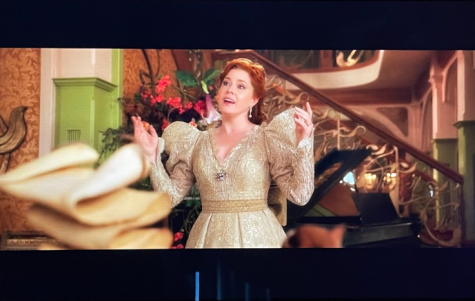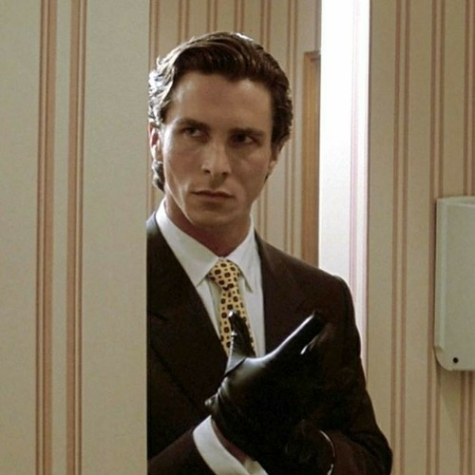Catching Fire sets Hunger Games fans ablaze
I enjoyed Catching Fire when I read it as a freshman. Over the past four years, though, I realized a lot of things I enjoyed as a freshman — store-bought cookies, math class, trite teenage fantasy novels — were nowhere near as enjoyable as I’d hyped them up to be. Still, as the screen opened over a snowy District 12, I hoped for the best.
I was not disappointed. And whether a diehard Games fanatic or casual observer, odds are you won’t be disappointed, either. Unlike many sequels, Catching Fire picks up on the flaws of its predecessor, The Hunger Games. Personally, I’m glad author Suzanne Collins cares more about her fandom’s opinions than her next movie’s $161 million debut. That’s not to say Catching Fire didn’t warrant such a windfall; indeed, from its streamlined plot, improved camera work and majestic effects, Catching Fire raises the bar for sequels of any genre.
As a book, Catching Fire trudges through plot development. A train of miscellaneous conversations and flashbacks deeply contrast with the fast-paced action that brings Hunger Games fans back for more. High-octane junkies beware — with over an hour of exposition, the Catching Fire movie is no instant Battle Royale. However, every minute of Catching Fire’s exposition speaks volumes of its characters and their predicament. Katniss Everdeen (Jennifer Lawrence) struggles to live as an idol, a murderer and a simple teenager. From her traumatic flashbacks to her awkward parley with Peeta Mellark (Josh Hutcherson), Katniss’ frustrations become evident to the audience, without the hand-holding narration that characterizes the book. New tributes, like the alluring Finnick Odair (Sam Claflin) and outspoken Johanna Mason (Jena Malone) are well-developed and characterized, adding even more depth to Katniss’ dilemma.
While Catching Fire won’t satisfy the occasional purist still wondering what happened to Peeta’s leg in the last movie, new director Francis Lawrence only diverges from the book to more quickly heighten the plot. Some of you especially-reminiscent readers may recall from the book a certain forest encounter or a certain electrified fence not found in the movie, but ask yourselves: Was it really that necessary to the plot? With Collins’ help, Lawrence masterfully carves the excess off Catching Fire’s plot, and not a detail further.
An hour in, the audience finally gets to see the 75th Annual Hunger Games, a “Quarter Quell” that ruthlessly pits previous Hunger Games survivors against each other. As the starting timer ticked down, I could only think of my biggest problem with the last Hunger Games movie: incessant camera-shaking. This dizzying phenomenon, which my friends eloquently dubbed “shakycam,” was used in the last movie to mask a disturbing amount of PG13-violating bloodshed.
The shakycam did its job too well, turning brilliant action scenes into a blurry mess. However, as the Games begin in Catching Fire, I was pleased to find that the camera stayed still for at least half a second per shot! “But what of the now-unmasked PG13-violating bloodshed?” you ask. In a stroke of filmmaking genius, Lawrence simply takes out the worst of the bloodshed. Violence-concerned parents, rejoice: this movie’s most ominous indicator of death is a cannon shot to signify a tribute’s passing.
Catching Fire’s art directors and costumiers deserve quite a bit of credit for bringing the book to life. From the Gaga-esque inhabitants of the Capitol to the vicious perils in the Games arena, viewers are immersed in Katniss’ outlandish dystopian future. Of course, state-of-the-art visuals have slowly become quite commonplace, but breathtaking imagery is breathtaking imagery, no matter how often you see it.
No movie is perfect, and despite Catching Fire’s vast improvement over The Hunger Games, I must pick at something. By far the worst aspect of this movie is the overplayed, underdeveloped teenage romance, which feels out of place in a movie more focused on a repressed proletariat’s anarchistic struggle. Love in the midst of war is what makes the Catching Fire book famous, but the movie adaptation fails to adequately portray this quality.
I especially cringed when the soundtrack went upbeat for a few lines of out-of-character witty flirting between Katniss and Peeta, minutes after they hatch out a plan to kill a trio of tributes. It may have worked in the book, but murder and scenes from a Nicholas Sparks novel don’t mix well onscreen.
Still, any complaints that can be made against Catching Fire are but trivial matters. A few flirty notes did little to detract from the otherwise stunning movie. Exceptional acting, screenplay and effects make Catching Fire even more of a must-watch than its predecessor. This movie will make you want to live in Katniss’ beautiful dystopia. It’s not that your life is that bad — this movie’s just that good.








